On the rare occasion trans attraction is shown in media, it is often portrayed as a complex and horrifying topic. The character experiencing that attraction usually shows disgust, or the trans person is depicted as being intentionally misleading, such as in the infamously bad Simpsons episode, There's Something About Marrying, which plays for comedy. 2008's Swedish vampire film Let The Right One In truly sets itself apart., not only in how it depicts attraction to trans people but also in how it takes problematic source material and changes harmful attitudes and stereotypes into something positive and meaningful.
Let The Right One In, based on John Ajvide Lindqvist's 2004 novel, was brought to the screen by Tomas Alfredson, with Lindqvist on screenwriting duties. Both sources are from twelve-year-old Oskar's (Kare Heddebrant) point of view. Living in Blackeberg, Sweden, his life changes when a man (Per Ragnar) and his daughter, who is Oskar's age, move in next door. As time passes, Oskar notices bizarre aspects about the daughter, Eli (Lina Leandersson), such as how she is only seen at night and doesn't seem to feel the cold. As Oskar grows closer to Eli and begins to fall in love with her, he discovers she is a vampire and what that means. That's not all Oskar discovers about Eli. In both the film and the novel, Oscar learns Eli wasn't assigned female at birth.

The film and the novel diverge in how this aspect of Eli is treated, revealed, discussed, and Oskar's reaction to it. In the novel, Eli is not treated as trans but as a eunuch, a castrated man. The novel discusses Eli through this lens, revealing she was forced into it by an older vampire who turned them against their will. Despite this, Eli willingly continues to act and live as a girl. The idea of transwomen as merely castrated men is a deeply rooted transphobic idea and viewpoint, still used in offensive jokes and stereotypes of transwomen to this day to invalidate their existence. This element of the novel, already problematic and offensive, also approaches Eli not as a girl but as something inhuman. Eli says she's "nothing." In contrast, in the film, Eli is treated as trans through overt subtext, and while a surgical scar is shown briefly and never brought up in the dialogue, the plot of Eli being forcibly castrated is intentionally removed.
The way Eli's physical sex is revealed also diverges from novel to film. In the novel, Eli's deadname is mentioned, driving the point home of their current name being a nickname. Using deadnames, (the names trans people were assigned at birth), is incredibly offensive and hurtful. It also must be said how much this version of Eli conveys the harmful idea of trans people pretending to be someone they're not. In the novel, Eli starts their relationship with Oskar before he knows what happened to her and is shocked to discover it afterward, feeling Eli lied to him. Unfortunately, this is commonly experienced by trans people in relationships, where after their partner finds out, things can become dangerous. The novel depicts Eli as deliberately hiding this from Oskar, further purporting the idea Eli has 'trapped' Oskar in this.
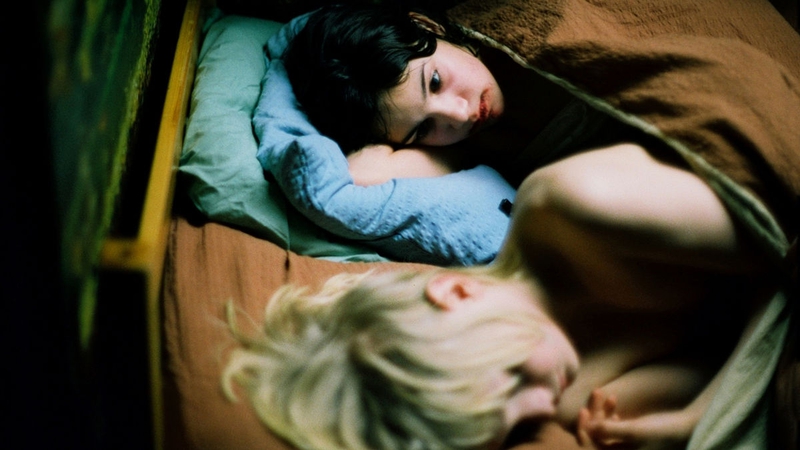
This is in sharp contrast to how the film approaches it. While it takes cues from the novel, such as Eli saying she's not a girl, it is framed in a way to make the audience believe Eli is instead referencing being a vampire. This subtle approach leans on the idea of Eli being trans and is further amplified by the earliest hint of Eli's identity, a coat she wears which has the trans flag's colors, light blue, light pink, and white, with the coat laying them out in the same pattern as on the flag. Eli's identity is also implied through her voice, a deliberate choice by the filmmakers to make her sound more ambiguous vocally after the actress' voice became too high over the course of filmmaking.
As mentioned earlier, the novel discusses Eli as if they are just pretending to be a girl, with the novel's original Swedish title even using the masculine form of 'Right' rather than the feminine form. In the film, however, there is no such moment. While this is partly from the excision of the problematic backstory, even after the reveal, the film does not stop treating Eli how she chooses to identify in its story, as a girl.
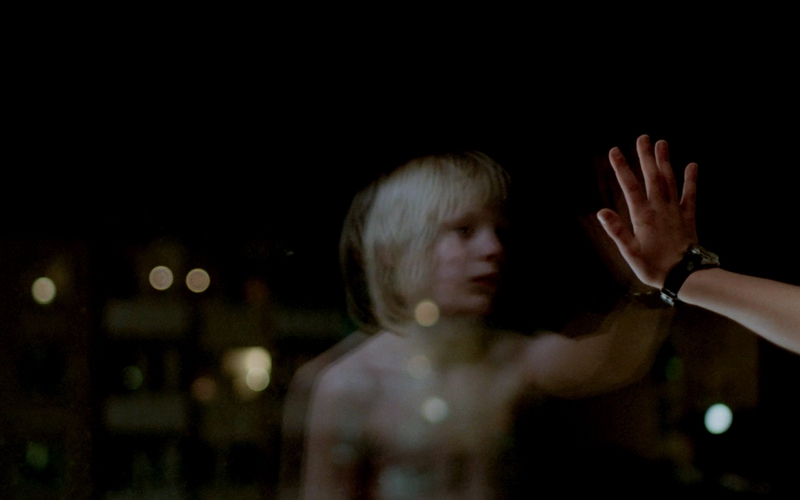
The greatest difference between the two narratives is how Oskar reacts to finding out. In the novel, Oskar is more bothered by Eli's physical condition than the vampirism. Oskar is deeply troubled by this and what it means about him, only coming to a true conclusion at the end of the novel. Alternately, in the film, when Oskar finds out by getting a quick peek at Eli while she's undressing and seeing her scars, he is unbothered. He still refers to Eli as a girl and is affectionate with her. The brief trauma and sense of Oskar feeling torn is instead replaced by his struggle to cope with the fact that Eli must kill people to survive.
It's in this change in the dynamic between Oskar and Eli that Let The Right One In's film version connects with me most. It can easily be surmised Oskar accepts Eli as she is no matter what, not just as a vampire, but as a trans girl. The novel, which falls into the trap of trans attraction being repulsive and troubling, is contrasted by the sweet, intimate, and openly loving relationship Oskar has with Eli in the film, even after finding out her identity.
After Eli's revelation, Oskar willingly murders to protect Eli when she becomes the focus of a vengeful hunt after inadvertently causing the death of a side character's girlfriend. After this scene, marking Oskar's willingness to change for Eli, they declare their love for each other. After Eli saves Oskar from his bullies after nearly killing him, the two of them decide to run away together in search of happiness. The film ends with the two of them tapping in morse code the word "kiss" to each other.
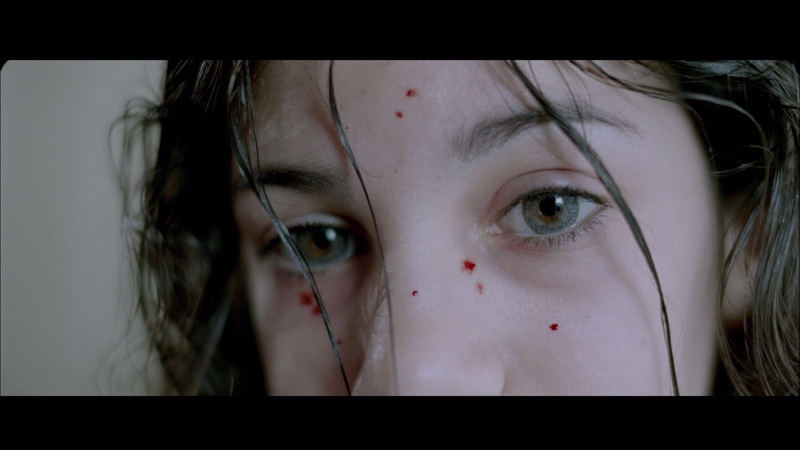
As a trans girl, I frequently struggle with feelings of whether I deserve attraction and love the way cis girls do. So frequently, trans people are depicted as and considered the other or lesser, even in stories claiming to support and be for trans people. It's why I connect so strongly to how the story told in the film version of Let The Right One In. While the novel is a horror story that uses problematic ideas to make itself more horrifying, the film is a fairy tale-esque love story that happens to be a horror film.
From the beginning, the film's intent was for it to be a love story, which is why many elements were revised and excised, including dark and grotesque elements beyond just Eli's treatment, such as pedophilia. Replaced by the warmth and comfort of Eli and Oskar's young relationship. As Eli says in the film, she's twelve, but she's been twelve for a long time. Scenes such as when Oskar peeks at Eli as she's changing feel less skeevy and more of an exploration of what young love is and what it's about. It is in that purity of the relationship between herself and Oskar, free from the world's biases and from the pain of the world that they come together and find love and comfort in each other.
Neither Oskar nor Eli judges the other and accepts the other almost without hesitation. Eli, given all Oskar goes through, saves him from his own demons, and Oskar does the same for Eli even after finding out who she is in more ways than one. In a lot of ways, they reflect each other. Both are lonely individuals, Eli as a result of her vampirism and Oskar from his divorced parents. His mother works long hours and often leaves him to fend for himself. Because of his alcoholism, his father frequently chooses his friends over Oskar. It's through that loneliness a connection is formed. It's also in their shared experiences with killing, Eli to survive, and Oskar in his fantasies of revenge.
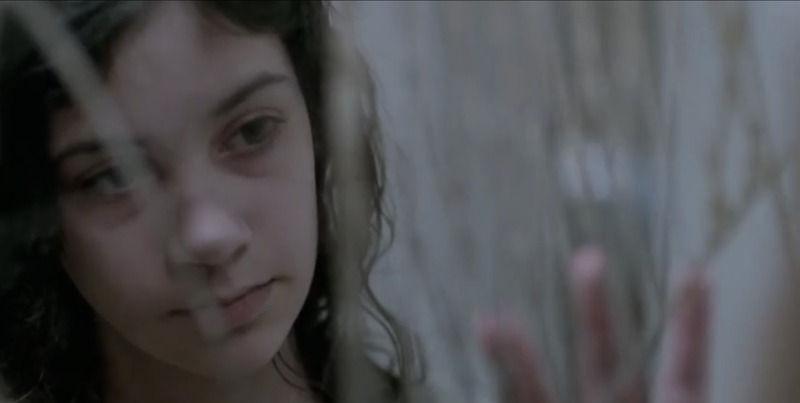
Beyond this, however, Let The Right One In also lets the story end as happily as it can, with the two of them going off into the world together, professing their love for one another. It's not an ending that implies everything will be perfect for them, nor is it even one that could fit the conventional idea of a happy ending since the two of them are on the run after Eli kills Oskar's bullies. Still, it's that they have found their true happiness in each other. All too frequently in the media, trans stories are ones of pity or tragedy, ending in death or sadness. The bury your gays trope frequently applies to trans people as well, yet in Let The Right One In's world, while Eli and Oskar's world isn't one of perfection, it's one where they can survive.
Vampires are beloved by the LGBTQIA+ community, and I am certainly among those who adore them. From the first-ever vampire book actually being a lesbian love story (Carmilla), to the frequent readings of gay subtext in other vampire works inherent to the initial prominent two vampire directors of F.W. Murnau and Tod Browning were gay. However, the rise of trans content in vampire stories is recent and still emerging. That's why for me, when I watched Let The Right One In, it was cathartic to see myself represented in a way I identified with through Eli.
Beyond my love for vampires, born from Lugosi's Dracula at a young age, it was how much Eli embodied the trans experience in many ways that fostered my appreciation of the subgenre. While it can be argued how much of her worries are over her vampirism and how much is attributed to worries over her identity, her reluctance to open up to Oskar and fear of abandonment connected with me deeply. Even after they begin to get closer, Eli still fears Oskar will abandon her and has a hard time accepting this even after Oskar proves himself time and time again. Something I have struggled with in my personal life.
It's this deep cathartic connection with Eli and the feeling of being so represented through a trans-girl vampire that made her romance with Oskar connect with me so heavily. While I've had the pleasure of having a lovely and accepting boyfriend, I always have that nagging worry in the back of my mind, and it is a part of me that I struggle with. So, seeing Oskar's genuine care and love for Eli even as she attempts to push him away from her and make him move on from her, in combination with his acceptance, truly speaks to me.
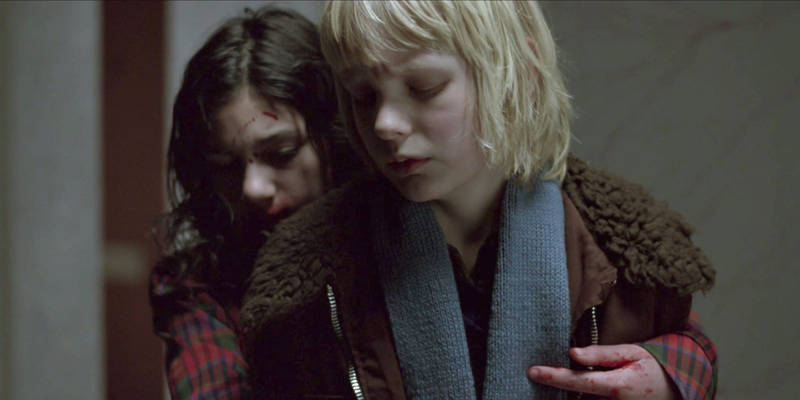
Those quiet moments they share together as they bond over their loneliness, protect each other, and truly understand and love each other. Touching yet sad moments like Eli hugging Oskar after he saves her from being killed, and their first kiss not long after. So rare is this in trans love stories, yet perhaps it is most fitting in one so baked into the horror mold and context despite it.
The embodiment of why vampires connect with LGBT people, and with me specifically, is a lack of acceptance from the outside world. The tragedy of loneliness and longing to be normal is found in many vampire stories. To be an ordinary person, or in Eli's case, an ordinary girl, in more ways than one, is at the core of many vampiric quests for life. Eli's search and desire for this and her finding it in just one person, and that one person being enough, is perhaps the most beautiful thing I have personally seen and felt in a vampire movie.
Often horror movies are ascribed as macabre and dark. This is often true, and in many ways, it's valid for Let The Right One In. It tackles dark subject matter and has maybe some of the most graphic vampire kills in a film. Yet Let The Right One In also shows the beauty and power inherent to horror movies. The genre's ability to tackle things their contemporaries don't (or won't), to represent people who frequently don't see themselves, and sometimes even give those loners and outsiders the happy ending they deserve.






